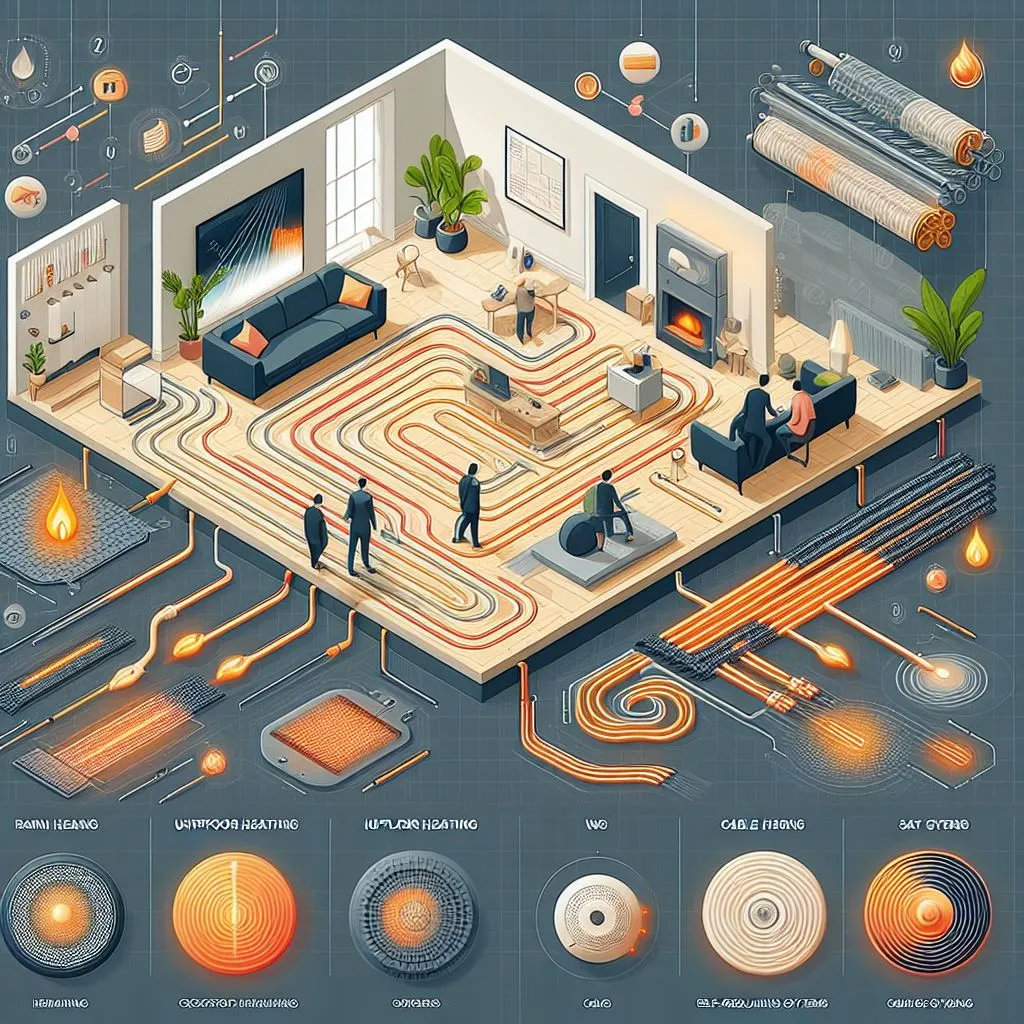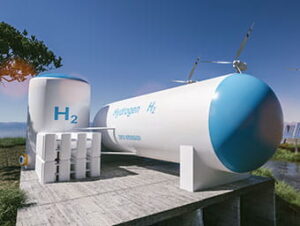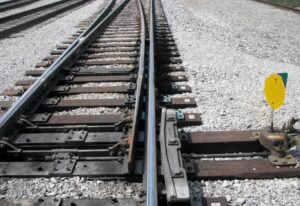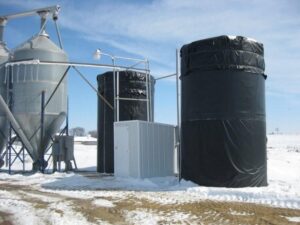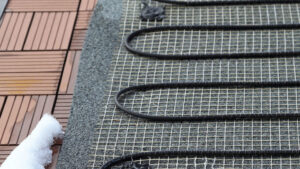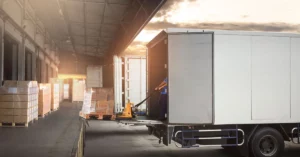Underfloor heating cables have revolutionized the way we experience warmth in our living spaces, offering a sophisticated and efficient alternative to traditional heating systems. As the name suggests, these cables are integrated into the flooring of a building, providing an even and comfortable distribution of heat throughout the room. You will find the best ones in our SVR-Trace shop.
The underlying principle of underfloor heating cables is to radiate heat from the floor upward, creating a gentle warmth that envelops the entire space. Unlike traditional heating methods that rely on forced air or radiators, underfloor heating offers a more uniform and pleasant heating experience.
There are two main types of underfloor heating cables: electric and hydronic. Electric type of these cables utilize a network of electrically conductive cables, while hydronic systems involve a network of water pipes for heat transfer. Both systems are designed to be discreetly installed beneath the flooring, eliminating the need for bulky radiators or vents and providing an aesthetically pleasing and efficient heating solution. Contact us if you want to see new products and blogs.
The installation of this type of cable involves careful planning and consideration of the specific requirements of the space. Whether it’s a new construction or a retrofit project, these systems can be tailored to fit various floor coverings, including tiles, wood, laminate, and even carpets. Check our shop for the best underfloor heating cables and order now!
One of the key advantages of underfloor heating cables lies in their energy efficiency. By heating the entire floor surface, these systems operate at lower temperatures compared to traditional heating methods, resulting in reduced energy consumption and lower utility bills. Additionally, the radiant heat generated by underfloor cables creates a more comfortable indoor environment, eliminating cold spots and providing an even warmth that is particularly appreciated during colder months.
In essence, underfloor heating cables represent a modern and efficient approach to indoor heating, offering a comfortable, energy-efficient, and aesthetically pleasing solution for homes and commercial spaces alike. As technology continues to advance, these systems are likely to become increasingly popular, providing a superior heating experience with a touch of sophistication.
Visit our blog page for the newest content about industrial products and household products in the field of the underfloor heating!
- How Underfloor Heating Cables Work?
- What are the Types of Underfloor Heating Cables?
- How Underfloor Heating Cables are installed?
- Are Underfloor Heating Cables energy efficient and Cost Saving?
- What are the Applications of Underfloor Heating Cables in Residential Spaces?
- Which one is better? Underfloor Heating Cable or Traditional Heating Systems
- What are the tips about Maintenance and Longevity?
- What are the Innovations and Future Trends of Underfloor Heating Cables?
- What are the Environmental Impact and Sustainability of Underfloor Heating Cables?
These are the questions that you will have answered here. So shall we begin?
Table of contents
- Introduction to Underfloor Heating Cable
- How Underfloor Heating Cables Work
- Types of Underfloor Heating Cables
- Installation Process and Considerations
- Energy Efficiency and Cost Savings
- Applications in Residential Spaces
- Underfloor Heating Cable vs. Traditional Heating Systems
- Maintenance and Longevity
- Innovations and Future Trends
- Environmental Impact and Sustainability
How Underfloor Heating Cable Works?
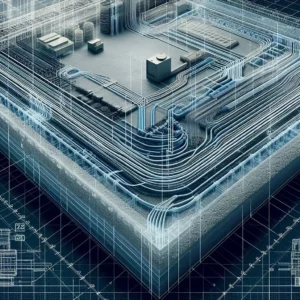
Underfloor heating cables operate on a simple yet effective principle to provide a comfortable and energy-efficient and cost-efficient heating solution. These systems consist of electric cables strategically placed beneath the floor surface. When electricity flows through these cables, they resist the current, generating heat in the process. This phenomenon, known as Joule heating, warms the floor and surrounding space.
The cables are typically made of materials with high electrical resistance, ensuring efficient heat production like constant wattage heating cable. They are arranged in a pattern, often in a serpentine layout, to achieve uniform heat distribution across the entire floor area. Once installed, a layer of flooring material is placed over the cables, acting as a thermal conductor.
Unlike traditional heating methods that rely on convection, these cables primarily emit radiant underfloor heating. This not only eliminates cold spots but also allows for lower operating temperatures, contributing to energy efficiency. The radiant heat warms the objects and surfaces in the room, creating a comfortable and consistent warmth underfoot.
In essence, underfloor heating cables revolutionize heating by turning the floor itself into a gentle and efficient radiator, offering a modern and effective way to achieve warmth and comfort in indoor spaces.
Types of Underfloor Heating Cable
Underfloor heating cables come in various types, each designed to meet specific heating requirements and installation preferences. Understanding the distinctions among these types is crucial for selecting the most suitable system for a particular space.
- Single Conductor Cables:
– The simplest form of underfloor heating cables consists of a single conductor, typically made of materials with high resistance. These cables are easy to install and are often utilized in smaller spaces or as supplementary heating in specific areas. The best underfloor heating straps is a good example.
2. Twin Conductor Cables:
– Twin conductor cables consist of two parallel conductors, allowing for a more uniform distribution of heat. This design is particularly effective in larger spaces, ensuring consistent warmth across the entire floor surface.
3. Self-regulating Cables:
– Self-regulating heating cables are equipped with a unique feature that automatically adjusts the heat output based on the surrounding temperature. As the temperature rises, the electrical resistance of the cable decreases, reducing the heat output. Conversely, when the temperature falls, the resistance increases, boosting heat production. This self-regulating capability makes these cables energy-efficient and prevents overheating.
4. In-screed Heating Cables:
– In-screed heating cables are embedded in a layer of screed or concrete beneath the flooring. This type of installation is common in new construction or major renovations. The screed acts as a thermal mass, storing and radiating heat efficiently.
5. Loose-fit Heating Cables:
– Loose-fit cables are flexible and easy to install, making them suitable for irregularly shaped or smaller spaces. They can be laid out according to the desired pattern, offering flexibility in design and placement.
6. Under Tile Heating Cables:
– Specifically designed for use under tile flooring, these cables are thin and easy to install. They provide rapid response times and are an excellent choice for bathrooms and elevated kitchens (underfloor heating benefits) .
Choosing the right type of underfloor heating cable depends on factors such as the size and layout of the space, the type of flooring, and the desired level of control. Consulting with a professional can help determine the most effective solution for a comfortable and energy-efficient heating system tailored to specific needs.
Installation Process and Considerations
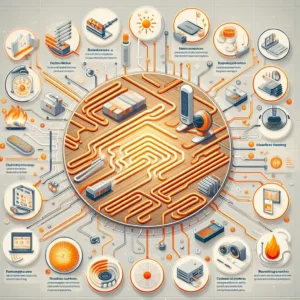
The installation of underfloor heating cables involves a meticulous process to ensure optimal performance and efficiency. Here’s an overview of the installation process and key considerations:(some new information about heat tracing)
1. Planning:
– Before installation, careful planning is essential. Factors such as the type of underfloor heating cable, the size and layout of the space, and the type of flooring need to be considered. A thorough assessment helps in determining the most suitable system for the specific requirements.
2. Subfloor Preparation:
– The subfloor must be clean, level, and dry before installation. Any irregularities in the subfloor can impact the effectiveness of the system. In some cases, a layer of insulation may be added to enhance energy efficiency and sustainability.
3. Cable Layout:
– The underfloor heating cables are then laid out according to the designated pattern. The layout is crucial for ensuring even heat distribution across the entire floor surface. The arrangement may vary based on the type of cable and the specific heating needs of the space.
4. Fixing the Cables:
– Once the layout is determined, the cables are fixed in place. In some installations, this may involve embedding the cables in a layer of screed or concrete, while in others, the cables are laid directly beneath the flooring material.
5. Connection to Power Supply:
– The underfloor warming cables are then connected to the power supply. It is imperative to follow the manufacturer’s guidelines and local electrical codes to ensure safe and proper installation.
6. Flooring Installation:
– After securing the cables, the chosen flooring material, such as tiles, laminate, or hardwood, is installed over the top. The flooring acts as a thermal conductor, efficiently transferring the heat to the room. The best underfloor heating film is a good example.
Considerations:
– Insulation: Adequate insulation beneath the heating cables prevents heat loss and enhances energy efficiency.
– Thermostats and their role in home heating and Controls: Installing a programmable thermostat allows for precise temperature control and energy conservation.
– Professional Installation: While some enthusiasts may attempt DIY installations, professional installation ensures compliance with safety regulations and optimal system performance.
In conclusion, the installation of underfloor heating cables demands meticulous planning and attention to detail. A well-executed installation results in a comfortable and energy-efficient heating system that seamlessly integrates with the space.
Energy Efficiency and Cost Savings
Underfloor heating cables stand out as an energy-efficient and cost-effective heating solution, providing a comfortable environment while potentially reducing long-term energy expenses.
1. Lower Operating Temperatures:
– One of the primary contributors to the energy efficiency of these cables is their ability to operate at lower temperatures compared to traditional heating systems. The radiant heat they emit warms the space more efficiently, reducing the overall energy consumption. This is particularly advantageous when used in well-insulated spaces.
2. Zonal Heating Control:
– Underfloor home heating systems with safety often include zonal heating control, allowing for the independent regulation of temperatures in different areas or rooms. This targeted approach enables users to avoid unnecessary energy usage in unoccupied spaces, optimizing comfort and energy efficiency.
3. Rapid Response Time:
– Underfloor heating cables, especially those incorporating advanced technology, boast a rapid response time. Unlike traditional heating systems that may take a significant amount of time to reach the desired temperature, underfloor heating quickly warms the space, allowing users to efficiently manage energy consumption based on immediate needs.
4. Programmable Thermostats:
– Many underfloor heating systems are equipped with programmable thermostats, enabling users to set specific temperatures for different times of the day. This level of control allows for energy-efficient heating, as users can adjust the system to lower temperatures during periods of lower occupancy or when warmth is less critical.
5. Long-Term Cost Savings:
– While the initial investment for underfloor heat tracing cables may be higher than some traditional heating systems, the long-term savings in energy bills often outweigh this cost. The increased energy efficiency and reduced heating costs contribute to a more sustainable and cost-effective heating solution over the life of the system.
6. Even Heat Distribution:
– These cables provide an even distribution of warmth across the entire floor surface, eliminating cold spots commonly associated with traditional heating methods helping home heating industry and environment. This even heat distribution ensures a consistent and comfortable temperature throughout the room, reducing the need for additional heating in specific areas.
In summary, the energy efficiency of underfloor heating cables stems from their lower operating temperatures, zonal heating control, rapid response time, and even heat distribution. While the upfront costs may be higher, the potential for long-term cost savings, coupled with a more environmentally friendly operation, positions the underfloor warming cables as a compelling choice for those seeking an efficient and sustainable heating solution.
Applications in Residential Spaces
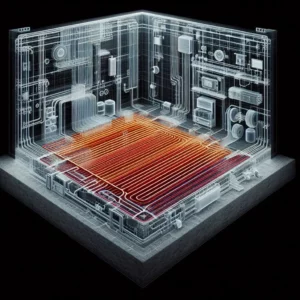
Underfloor heating cables have gained popularity in residential spaces, offering a versatile and efficient heating solution that enhances comfort and aesthetics. The applications of these cables in homes are diverse, providing warmth in various rooms and serving specific needs.
1. Living Rooms:
– The living room is a focal point of any home, and these cables create a cozy and inviting atmosphere. Installing these cables beneath carpet, hardwood, or tile flooring ensures even warmth, eliminating the need for bulky radiators and allowing for flexible furniture arrangement.
2. Bedrooms:
– Bedrooms benefit greatly from underfloor heating, providing a luxurious and comfortable environment for rest. The absence of radiators allows for more layout options, and the gentle, consistent warmth enhances the overall sleeping experience.
3. Bathrooms:
– Underfloor heating cables are particularly popular in bathrooms, where cold floors can be uncomfortable. These systems can be installed beneath tile or stone flooring, offering a warm surface that complements the often-used materials in bathroom design. Some example product that can be used is drain-line heating cable.
4. Kitchens:
– In kitchens, where cold tiles can be unwelcome, the warming cables provide an efficient solution. They contribute to a warm and pleasant environment, making time spent cooking or dining more enjoyable.
5. Hallways and Entryways:
– Entryways and hallways often experience temperature fluctuations due to the constant opening and closing of doors. Underfloor heating cables help maintain a consistent and comfortable temperature in these transitional spaces helping oil and gas industry and underfloor heating.
6. Conservatories and Sunrooms:
– Spaces with large windows, such as conservatories or sunrooms, can benefit from underfloor heating. The radiant heat complements the natural light, creating a comfortable and inviting area throughout the year.
7. Renovations and Retrofits:
– These warming cables are suitable for both new constructions and retrofitting existing homes. Their flexibility in installation allows homeowners to enjoy the benefits of modern heating without major structural changes.
8. Energy-Efficient Homes:
– For homeowners aiming to reduce their carbon footprint and increase energy efficiency, these cables offer a sustainable alternative. The lower operating temperatures and zonal heating control contribute to overall energy conservation.
In conclusion, underfloor heating cables have found diverse applications in residential spaces, enhancing comfort, aesthetics, and energy efficiency. As a discreet and effective heating solution, they cater to various areas within a home, creating an inviting and comfortable environment for occupants.
Underfloor Heating Cable vs. Traditional Heating Systems
Underfloor heating cables and traditional heating systems represent two distinct approaches to achieving indoor warmth, each with its advantages and considerations.
Underfloor Heating Cables:
These cables operate by generating radiant heat from electric currents flowing through cables installed beneath the floor surface. This method ensures an even distribution of warmth across the entire floor, eliminating cold spots. One notable advantage is the ability to operate at lower temperatures than traditional systems, contributing to energy efficiency. Zonal heating control, rapid response times, and compatibility with various flooring materials make underfloor heating cables an attractive option for modern homes.
Traditional Heating Systems:
Traditional heating systems, such as radiators or forced-air systems, rely on convection to warm the air in a room. These systems often require higher operating temperatures, resulting in uneven heating and potential energy inefficiency. Industry and underfloor heating system might be interesting for you. While radiators are a common sight in many homes, they can be bulky and limit furniture placement.
Considerations:
– Comfort: The warming underfloor cables provide a more comfortable and consistent warmth, eliminating the discomfort of cold floors often associated with traditional systems.
– Installation: These warming underfloor cables may have higher upfront installation costs but offer flexibility in design and compatibility with various flooring materials. Traditional systems may be simpler to install but can be visually obtrusive and also might have more health benefits about underfloor heating systems.
– Energy Efficiency: Underfloor heating cables tend to be more energy-efficient due to lower operating temperatures and zonal heating control, potentially leading to long-term cost savings.
In summary, the choice between underfloor heating cables and traditional systems depends on factors like comfort preferences, installation considerations, and the desire for energy efficiency in creating a warm and inviting indoor environment.
Maintenance and Longevity
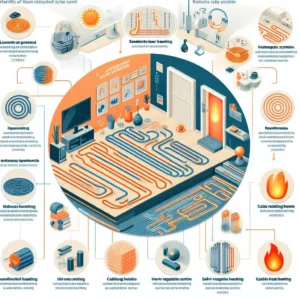
Underfloor heating cables are renowned not only for their efficiency in providing warmth but also for their low-maintenance characteristics and longevity. Proper care and attention to installation details contribute to the extended lifespan of these systems. The ease and comfort of underfloor heating systems.
1. Minimal Maintenance Requirements:
– One of the notable advantages of underfloor heating cables is their minimal maintenance requirements. Unlike traditional heating systems that may involve regular checks on boilers or radiators, underfloor heating operates with fewer components, reducing the likelihood of issues arising.
2. Professional Installation:
– Ensuring the longevity of underfloor heating cables begins with professional installation. Proper layout, secure fixing, and adherence to manufacturer guidelines are crucial for optimal performance. Professional installers have the expertise to address potential challenges during installation, minimizing the risk of future problems.
3. Quality Materials:
– The longevity of underfloor heating cables is also influenced by the quality of materials used in their construction. High-quality cables are more durable and less prone to wear and tear over time. Investing in reputable and reliable products contributes to the overall reliability of the heating system.
4. Regular Inspections:
– While underfloor heating systems are generally low-maintenance, periodic inspections are advisable. This involves checking for any signs of damage to the cables, ensuring they are securely fixed, and verifying the functionality of associated components such as thermostats.
5. Compatibility with Flooring Materials:
– The compatibility of underfloor heating cables with various flooring materials is crucial for both performance and longevity. Consultation with professionals during the selection and installation of flooring helps to ensure optimal heat transfer and longevity of the entire system.
6. Long Lifespan:
– Underfloor heating cables, when installed and maintained correctly, can have a long lifespan. Many systems come with warranties that attest to their durability and reliability. This longevity not only provides sustained comfort but also contributes to the overall cost-effectiveness of the investment.
7. Addressing Issues Promptly:
– In the rare event of a malfunction or issue, addressing it promptly is essential. Quick response to any concerns, such as uneven heating or disruptions in the system, can prevent minor problems from escalating and impacting the overall performance and longevity of the underfloor heating cables.
In conclusion, underfloor heating cables offer a combination of minimal maintenance requirements and a long lifespan when installed and cared for properly. The use of quality materials, professional installation process of underfloor heating systems, and periodic inspections contribute to the overall reliability of these systems, ensuring sustained comfort and efficiency over an extended period.
Innovations and Future Trends
The realm of underfloor heating cables is witnessing ongoing innovations, driven by a commitment to enhancing efficiency, sustainability, and user experience. Several trends and advancements point towards a future where underfloor heating becomes even more intelligent, eco-friendly, and seamlessly integrated into modern living spaces.
1. Smart Thermostats and Connectivity:
– The integration of smart thermostats with underfloor heating cables is a notable trend. These devices offer users the ability to remotely control and monitor their heating systems through mobile applications. This connectivity not only enhances user convenience but also contributes to energy efficiency by allowing precise temperature management. Related product: heating cable with two power ratings
2. Energy-Efficient Materials:
– Innovations in the materials used for underfloor heating cables focus on maximizing energy efficiency. This includes the development of cables with improved conductivity and heat retention properties, ensuring that the systems operate at optimal levels while minimizing energy consumption. Sometimes this method is used in silo heating with heating cables
3. Eco-Friendly Heating Solutions:
– With a growing emphasis on sustainability, the future of underfloor heating cables is likely to see advancements in eco-friendly heating solutions. This may include the integration of renewable energy sources, such as solar or geothermal energy, to power the heating systems, reducing their environmental impact.
4. Integration with Smart Home Systems:
– The future of underfloor heating cables aligns with the broader trend of smart homes. Integration with home automation systems is becoming more prevalent, enabling users to synchronize heating preferences with other aspects of their smart homes, such as lighting and security systems.
5. Improved Installation Methods:
– Innovations in installation methods are focusing on making underfloor heating cables even more accessible and adaptable. This includes advancements in retrofitting options, allowing homeowners to integrate underfloor heating into existing spaces with minimal disruption.
6. Zone-Specific Heating Solutions:
– Future trends indicate a move towards more precise control over heating in different zones of a space. Zone-specific heating solutions allow users to tailor the temperature in specific areas, optimizing energy usage and providing personalized comfort.
7. Integration with Building Management Systems:
– In commercial settings, the integration of underfloor heating cables with building management systems is becoming more prevalent. This allows for centralized control, monitoring, and optimization of heating across large spaces, contributing to energy efficiency and cost savings.
In conclusion, the future of underfloor heating cables is characterized by a convergence of technological advancements, sustainability initiatives, and a focus on user-centric solutions. These innovations are poised to make underfloor heating even more energy-efficient, convenient, and seamlessly integrated into the evolving landscape of modern living and commercial spaces.
Environmental Impact and Sustainability
Underfloor heating cables contribute to a more sustainable and environmentally friendly approach to indoor heating, offering several advantages that align with contemporary eco-conscious practices.
1. Energy Efficiency:
– One of the primary environmental benefits of underfloor heating cables is their energy efficiency. These systems operate at lower temperatures compared to traditional heating methods, reducing overall energy consumption. The efficient distribution of heat across the entire floor surface eliminates the need for higher temperature settings, further enhancing energy efficiency.
2. Renewable Energy Integration:
– The sustainability of underfloor heating cables is heightened when integrated with renewable energy sources. Many systems can be powered by electricity generated from renewable sources such as solar or wind power. This integration contributes to a significant reduction in the carbon footprint associated with heating. Open space heating and heating cable might interest you.
3. Zonal Heating Control:
– Zonal heating control, a feature common in underfloor heating systems, allows for precise temperature regulation in different areas of a space. This minimizes energy wastage in unused or less frequently occupied zones, promoting sustainable heating practices.
4. Reduced Heat Loss:
– Underfloor heating cables operate by radiating heat from the floor upward, reducing heat loss through ceilings and walls. This method of heating minimizes energy waste, resulting in a more efficient use of resources.
5. Long Lifespan and Durability:
– Underfloor heating cables are designed for durability, often coming with extended lifespans. The longevity of these systems reduces the frequency of replacements and minimizes the environmental impact associated with manufacturing and disposal of heating equipment.
6. Low Environmental Impact Materials:
– The materials used in underfloor heating cables are evolving to have a lower environmental impact. Manufacturers are increasingly incorporating eco-friendly materials in the construction of cables, ensuring that the systems are not only energy-efficient but also environmentally responsible.
7. Reduced Use of Building Materials:
– Underfloor heating eliminates the need for space-consuming radiators, allowing for more efficient use of building materials. This can be especially relevant in new constructions or renovations, contributing to a reduction in overall resource consumption.
In conclusion, underfloor heating cables offer a sustainable and environmentally conscious alternative to traditional heating methods. Their energy-efficient operation, compatibility with renewable energy sources, and focus on reducing heat loss contribute to a greener and more sustainable approach to indoor heating, aligning with the global shift towards eco-friendly practices and resource conservation.
FAQs
1. Q: How does underfloor heating cable work?
– A: Underfloor heating cables operate by conducting electricity through wires beneath the floor, generating heat through resistance that warms the floor and surrounding space.
2. Q: What types of flooring are compatible with underfloor heating cables?
– A: Underfloor heating cables are suitable for tiles, stone, laminate, and hardwood flooring, providing versatility in floor material choices.
3. Q: Are underfloor heating cables energy-efficient?
– A: Yes, These cables are energy-efficient, operating at lower temperatures and offering zonal heating control for optimized energy consumption.
4. Q: Can underfloor heating cables be retrofitted into existing homes?
– A: Yes, underfloor heating cables can be retrofitted, offering a convenient way to enjoy the benefits of underfloor heating without major structural changes.
5. Q: How long do underfloor heating cables last?
– A: With proper installation and maintenance, these cables can last 20 years or more.
6. Q: Can underfloor heating cables be the primary heating source?
– A: Yes, These warming cables can serve as the primary heating source, providing consistent warmth across the floor surface.
7. Q: Are underfloor heating cables safe?
– A: Yes, when installed and maintained correctly, underfloor heating cables are safe, with modern systems often equipped with safety features and thermostats for control.
8. Q: What is the cost of installing underfloor heating cables?
– A: Installation costs vary based on factors like space size and flooring type; professional assessments are recommended for accurate estimates.
9. Q: Can underfloor heating cables use renewable energy sources?
– A: Yes, underfloor heating cables can integrate with renewable sources like solar or geothermal power, contributing to a sustainable heating solution.
10. Q: How adaptable are underfloor heating cables to different room sizes?
– A: Underfloor heating cables are adaptable to various room sizes, with customizable layouts ensuring even heat distribution in both small and large spaces.
Conclusion
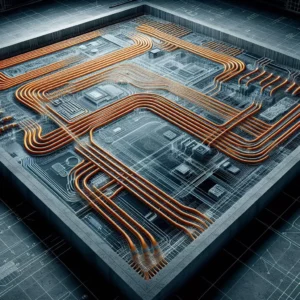
In conclusion, underfloor heating cables emerge as a modern and efficient solution for achieving optimal comfort in residential and commercial spaces. Their innovative design, utilizing electric currents to generate radiant heat, ensures even warmth throughout the floor, eliminating cold spots and offering a luxurious feel to living environments. The adaptability of underfloor heating cables to various flooring materials, coupled with their ability to operate at lower temperatures and their weakness in trace heating of pipe and vessel, underscores their versatility and energy efficiency.
Notably, these systems are not just a contemporary comfort feature; they align with sustainability trends. Underfloor heating cables contribute to energy conservation, with the potential for integration with renewable sources further enhancing their eco-friendly profile. The longevity and minimal maintenance requirements of underfloor heating cables emphasize their durability, providing a long-lasting and cost-effective heating solution and having an effect on loading and unloading process of heating cables.
Whether as a primary heating source or a supplementary system, underfloor heating cables offer a seamless blend of comfort, energy efficiency, and sustainability. As technology continues to advance, and with ongoing innovations in materials and smart integration, the future of underfloor heating cables promises an even more sophisticated and environmentally conscious approach to indoor heating.

